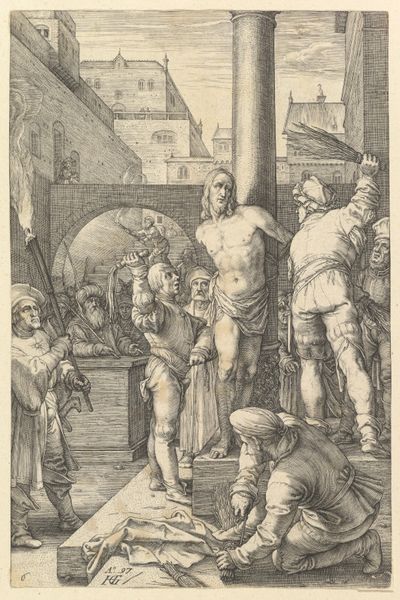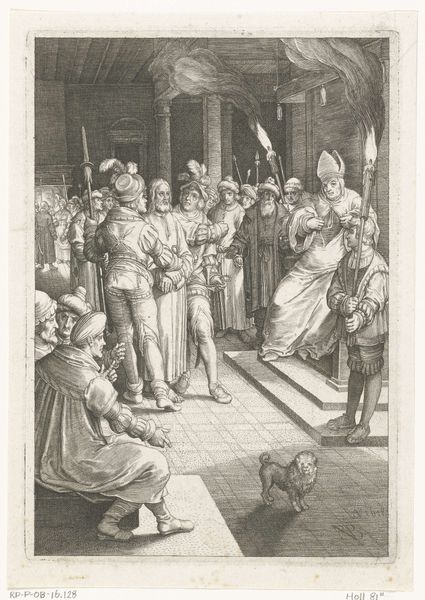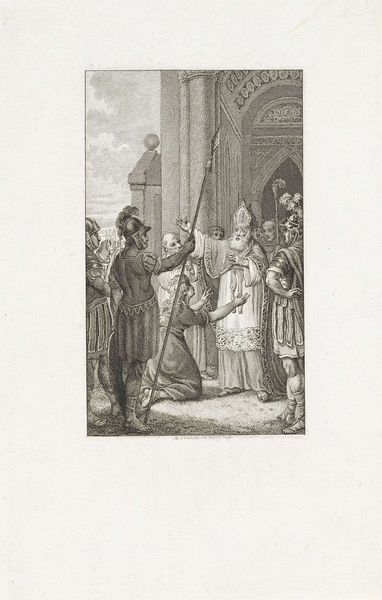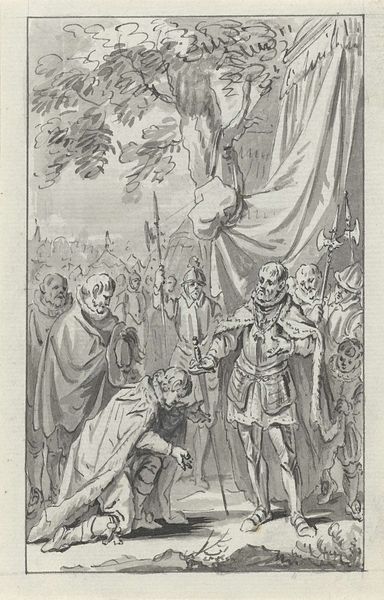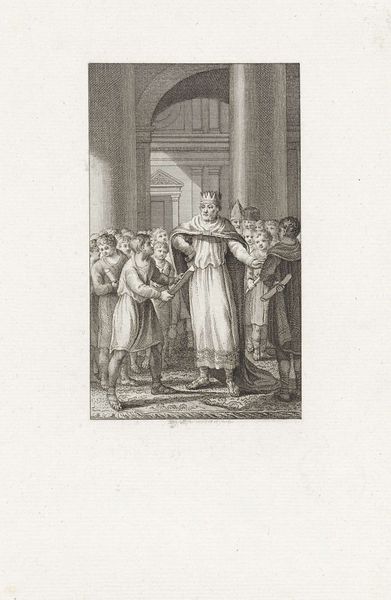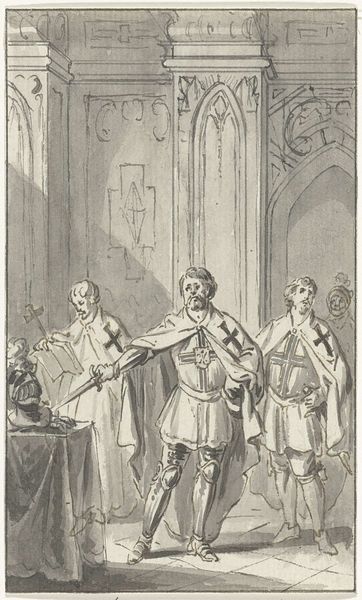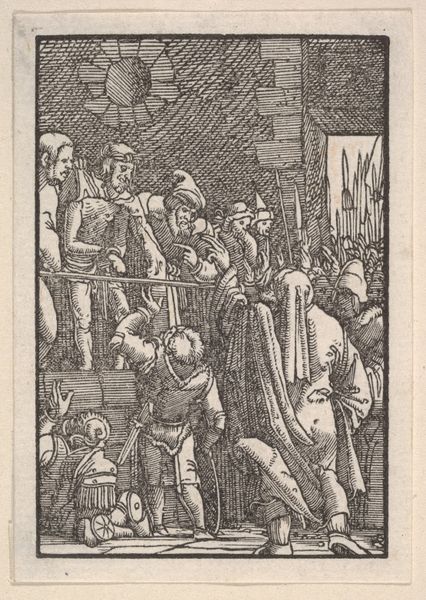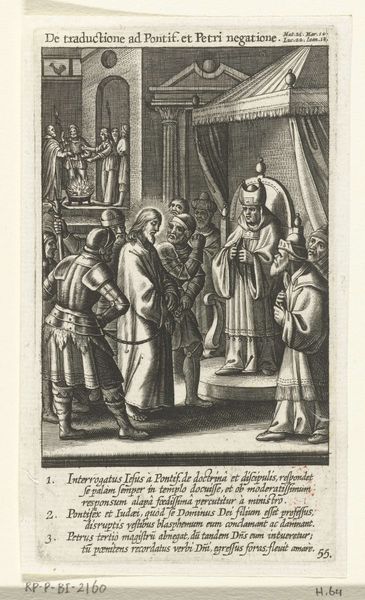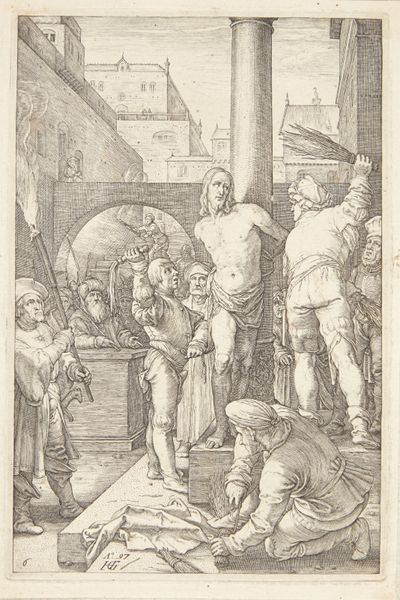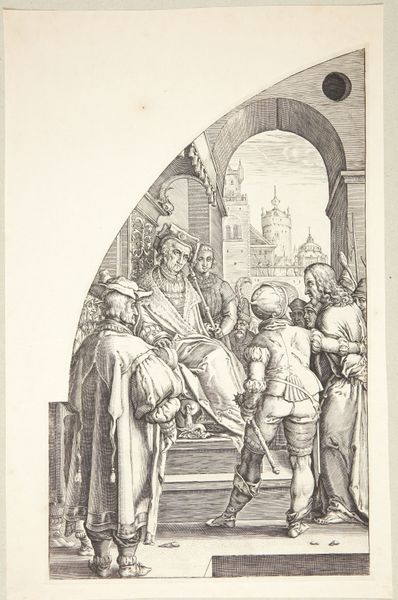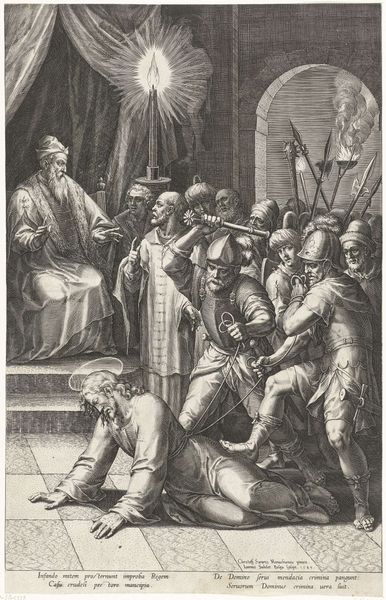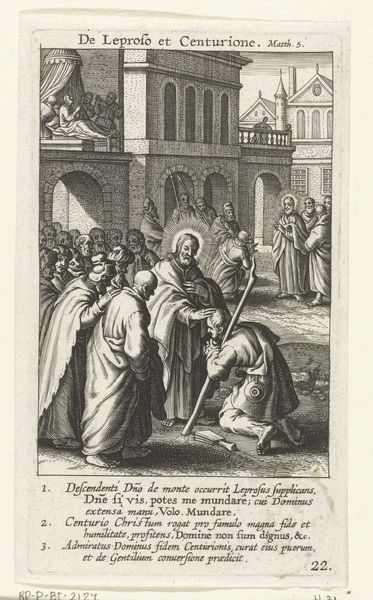
Dimensions: height 173 mm, width 125 mm
Copyright: Rijks Museum: Open Domain
This line engraving by Jacobus van Dijck depicts Boudewijn, Count of Flanders, shaking hands with the farmer Cnillis, a powerful symbol of reconciliation. The act of shaking hands, a gesture of peace and agreement, is central. This motif of clasped hands resonates across time and cultures. We see it in ancient Roman depictions of marital harmony and in medieval images of oath-taking. Yet, its presence here, between a nobleman and a peasant, speaks to a specific socio-political tension. Compare it, for example, to images of supplication where a lower figure kneels before a ruler—here, the handshake suggests equality, a leveling of social hierarchy. The collective memory of social struggles perhaps unconsciously informs our reading of this image. This meeting between nobleman and farmer is emotionally charged, and as a result, this symbol touches upon deep-seated desires for social harmony, even as it reflects the ever-present tensions between classes. The handshake, therefore, is not simply a contractual agreement but an expression of hope, a symbol that reappears through history, continuously negotiated and reimagined.
Comments
No comments
Be the first to comment and join the conversation on the ultimate creative platform.
